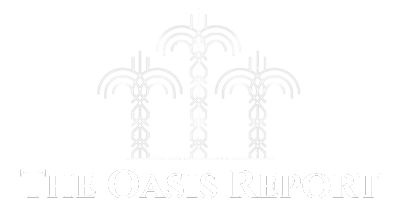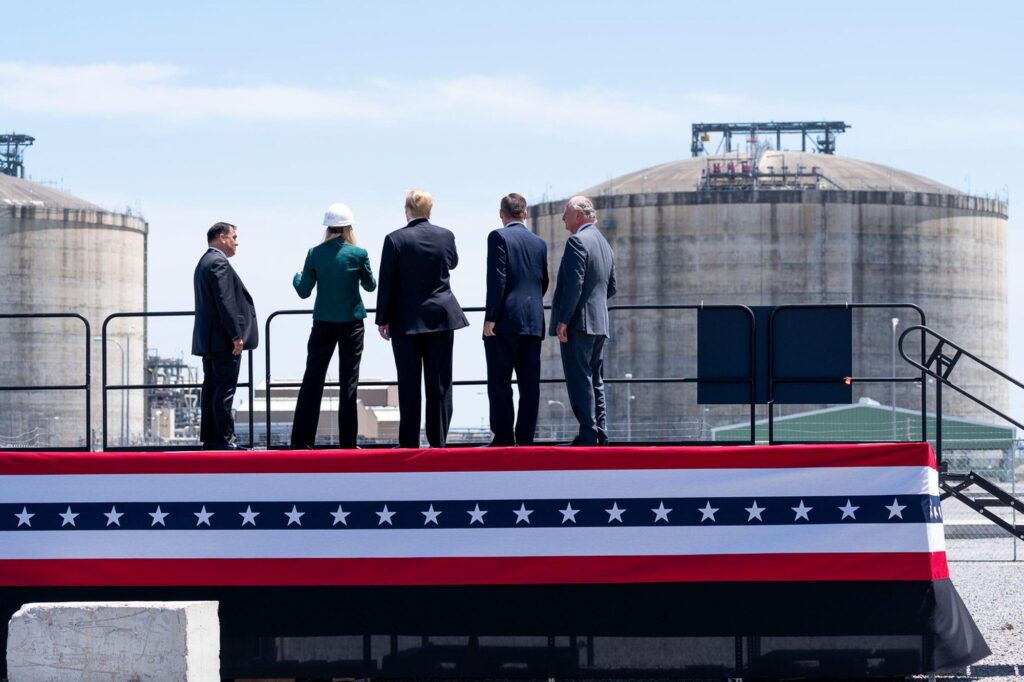Donald Trump’s Gulf visit seems already to belong to history, although it was less than a month ago.
Alongside the eye-catching announcements for investments in artificial intelligence, arms and aluminium, US liquefied natural gas (LNG) has been a major target for Saudi Arabia and the UAE.
Now Adnoc’s latest announcement, a potential $18.7 billion swoop for Australia’s Santos, marks either a shift from the US – or a complement.
Trump’s visit was preceded by some extensive deal-making in the gas sector. Saudi Aramco signed a preliminary agreement to buy LNG from American utility Sempra and possibly to take a 25 percent stake in the second phase of its Port Arthur facility in Texas.
Abu Dhabi strategic sovereign investor Mubadala had already concluded a deal to buy gas assets in south Texas, with a possible stake in the Commonwealth LNG export project in Louisiana.
US energy secretary Chris Wright visited the Gulf for groundwork in April. During the presidential tour, Adnoc reaffirmed its commitment to do more business in the US, with a target of $440 billion of UAE energy investments by 2035. It already had an agreement to buy LNG and take an ownership stake in the RioGrande project in Texas.
These companies do not need the gas for their domestic markets. Saudi Arabia does not import or export gas, while Abu Dhabi is expanding its own LNG exports with the under-construction Ruwais plant, due to start up in 2028. So why the growing interest in international LNG?
Aramco and Adnoc both recognise three things.
First, to be serious international players – peers of the big international companies such as Shell and ExxonMobil – they need to be strong in gas. It is lower carbon and has a longer-term role in a decarbonising world economy than oil.
Second, they cannot compete with the Qatari behemoth, at least not by doing the same thing. Their domestic gas resources are not big enough, and, crucially, are significantly costlier to produce.
Third, they can find a role as portfolio players: assembling a collection of diverse equity positions and purchase contracts, which vary in geography, pricing and length. The gas world is increasingly divided by sanctions, trade barriers and security problems.
The LNG market is likely to enter a period of oversupply from the late 2020s for a few years, as a hefty wodge of US and Qatari output comes online
Emerging markets need affordable energy; mature markets require flexibility to ensure energy security while not over-committing to unwanted long-term supplies.
Intermediaries who can bear financial risk, and manage the complex task of matching supply and demand, are badly needed and can profit.
Aramco is seeking an LNG portfolio of 7.5 million tonnes per year by 2030. Of this, it has 3.6 million tonnes already, plus another 1.25 million through its stake in private equity-backed MidOcean.
It is said to be in talks to buy 20-30 percent of the 16.5 million tonne Louisiana LNG project from Australian specialist Woodside, a deal which, if consummated, would mean the Saudi giant easily reaches its target.
Subsequently, on June 3, Adnoc’s international unit XRG announced a bigger ambition: a portfolio of 2025 million tonnes per year of LNG by 2035.
Its current volumes from the US and Mozambique amount to about 4.4 million tonnes, not including its parent’s own LNG output. It remains to be seen how Adnoc or XRG collaborate with compatriot Mubadala, whose own US deal will bring it 2.2 million tonnes of annual output if the Commonwealth LNG project goes ahead.
So XRG needs to sign up about 1.5-2 million tonnes each year to 2035, a busy but doable task.
It has two challenges, though.
First, most of the available deals are likely to be in the US, which raises the risk of over-concentration and an unbalanced portfolio overly focused on the Atlantic Basin. For political reasons, it would not have access to the other big source of growth, Qatar.
Second, the LNG market is likely to enter a period of oversupply from the late 2020s for a few years, as a hefty wodge of US and Qatari output comes online.
Few projects will reach a final investment decision in this time. American projects may be doubly squeezed: rising costs for steel at home, because of tariffs, and higher feedstock prices as new export projects compete with a rush to secure electricity for data centres.
During this time, XRG can seek distressed US projects needing offtake and cash to go ahead. That can help it to achieve its volume target relatively easily, but, again, at the risk of lack of geographic diversity, and of having to turn around struggling ventures.
To remedy this, it needs either more of a role in risky greenfield projects such as Mozambique or Tanzania, or some sizeable acquisitions.
Adnoc has on several occasions been linked with an acquisition of part or all of struggling British super-major BP, whose own LNG portfolio will reach 25 million tonnes this year, exactly the right size. But a deal for BP is likely to face stiff competition. BP’s LNG business will be a prime target for likely rival Shell, as well as perhaps Aramco.
So the Santos transaction makes sense. The Adelaide-headquartered company controls two Australian LNG projects: Darwin in the Northern Territories and Gladstone in Queensland, and has stakes in Papua New Guinea LNG. It does have a US position, but that is in oil, in Alaska.
If the deal can win shareholder and regulatory approval, it complements Adnoc’s US ambitions, bringing the required scale and an Asia-Pacific balance. Existing assets counterweigh the exposure to new developments.
The UAE and Saudi deals for US LNG will, of course, please President Trump. They align with his goal of US “energy dominance”, and boosting American exports in an industry where it remains highly competitive.
The companies have good reasons of their own to pursue these deals, though. Regardless of whether or when Mr Trump or Mr Wright return to the Gulf, Saudi and Emirati officials will be flying the other way.
Robin M Mills is CEO of Qamar Energy, and author of The Myth of the Oil Crisis



